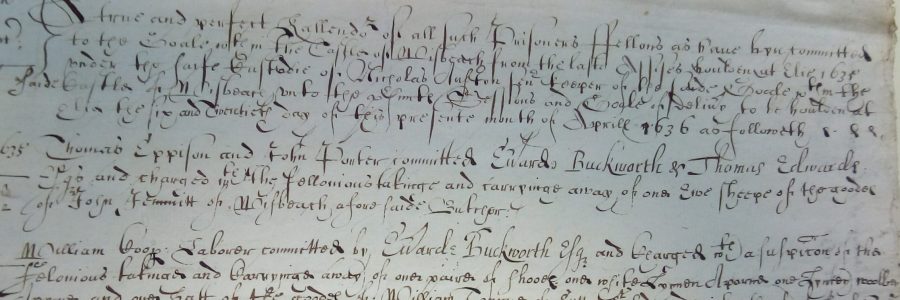
Introduction to the Ely assize files
A new tranche of assize court records has recently been added to the online catalogue, ArchiveSearch, the new Cambridge-wide archive management system. Following the completion of cataloguing of the series of assize rolls, the formal record of the assizes, attention has now turned to the accompanying series of background papers. These papers are known as assize files and comprise the working documents or real-time record of the assizes. The records themselves are series of large, often unwieldy, bundles of paper and parchment, some still secured together with an original parchment tie.
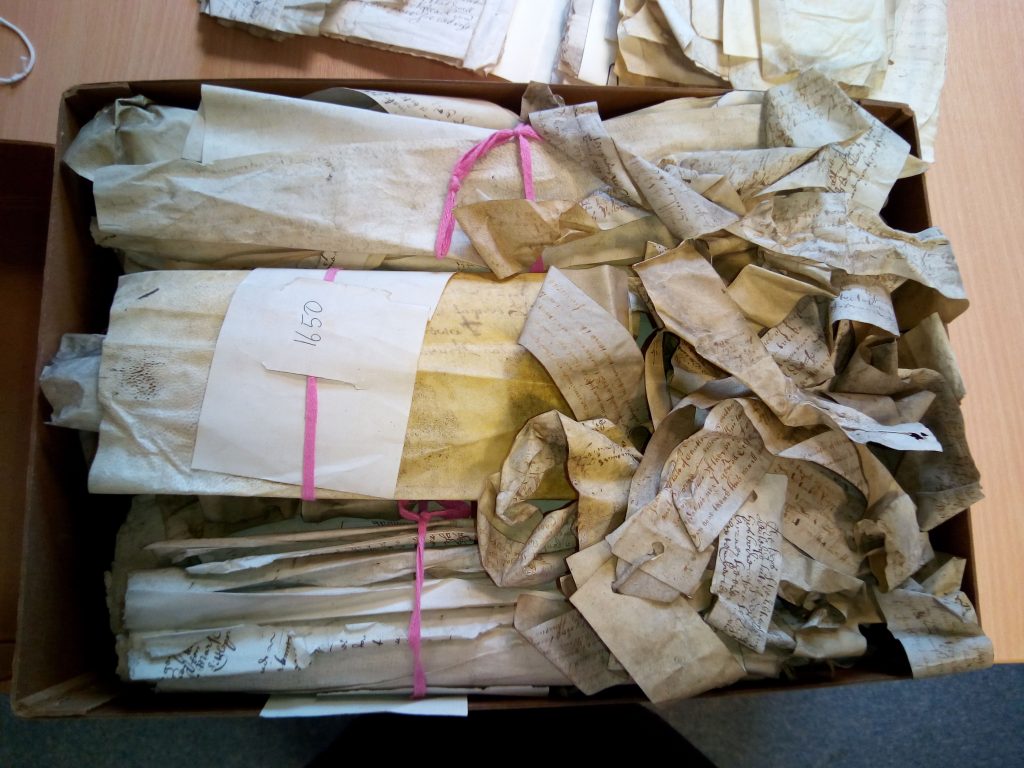
The assize files tend to comprise a mixture of examinations, witness depositions, indictments and bills, coroners’ inquisitions, bonds to appear in court or to give evidence, lists of court officials, gaol calendars, correspondence and an array of related papers. In some case the files supplement information contained in the rolls and in other cases they present entirely new information. Unlike the rolls which are ‘of the record’, that is formulaic and largely devoid of specific detail, the assize files provide a much fuller picture of the individuals accused of crimes. A good example of this – the fascinating case of John and Bridget Bonham who fell under suspicion following the discovery of an earthen pot full of bones in the village of Sutton in 1630 – has been described in an earlier blogpost.
In this post, we highlight the untapped riches of the assize files with examples and images of some of the most common record types.
Indictments
These narrow strips of paper are the formal statement of charge against the accused, often annotated with plea, verdict or sentence. In this example, Anthony Maude, a labourer of Wisbech, is charged with the theft (‘feloniously stole, took and carried away’) of six capons and six hens from an unknown person at Wisbech. The annotations to the top of the indictment show that Maude confessed to the charge and was to whipped.

In this second example, James Goodwyn, a labourer of Ely, was charged with the theft of a pig from Walter Mayes. He opted for jury trial and was found not guilty.

Depositions and examinations
Information in the indictments is often replicated verbatim in the assize rolls. In this way, although some indictments have been altered to reflect the outcome of a case, as a record type they are still formulaic and largely lacking in detail about how a particular verdict or sentence was reached. Some of the gaps in our knowledge can be filled by depositions and examinations, records effectively akin to pre-trial witness statements. The survival rate of depositions and examinations is generally quite patchy. Those that do survive are real gems, full of detail and personality, and provide as close to a first-hand account of an incident as is possible.
In this example, Richard Plombe, a weaver of Outwell, accused Andrew King of taking a ‘little painted trunke’ containing a small sum of money, a hatband and a knife from the house of John Crane in Outwell. The theft was accomplished by means of a hole made in the wall of Crane’s house from a neighbouring property. Plombe’s deposition centred on King’s suspicious actions on the night of the theft, including an incident when King deliberately snuffed out a candle when going to bed so that the hole in the wall and the theft would not be immediately discovered. There is also a short deposition from the victim, John Crane, who attested King was ‘a very idle and prodigall fellow and one that useth to spend a groat before he doth earne two pence’. In this example, Andrew King had nothing to say for himself in defence but, in other cases, the accused often made a counter-statement to provide an alibi, to confess or to offer an explanation of extenuating circumstances.
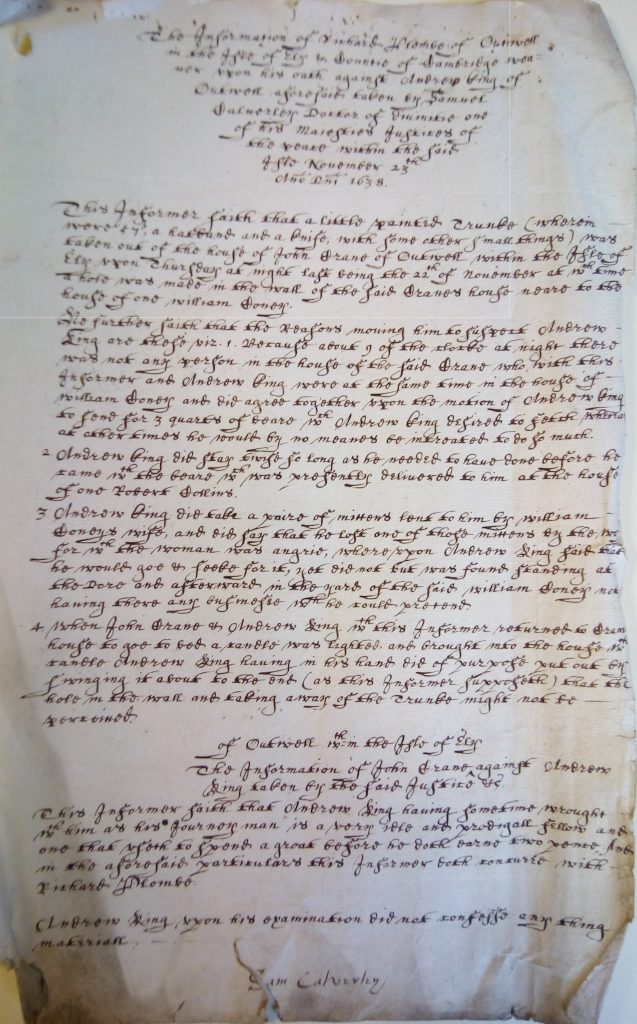
Gaol calendars and gaol delivery returns
Further information about the process by which alleged criminals were arrested and/or punished can be found in documents relating directly to the main gaols in the Isle of Ely, Wisbech Castle and Ely Barton. Gaol calendars provide a list of all the prisoners held in a particular gaol at a particular point in time, usually coinciding with the assizes, and often giving details of the charge against each prisoner. Here one of those arrested is William Cooper, a labourer, on suspicion of ‘feloniously taking and carrying away’ a pair of shoes, a white linen apron, a lyncey-woolcey [linsey-woolsey; coarse linen fabric] apron and a hat from a tailor in Sutton St Edmunds in 1636.
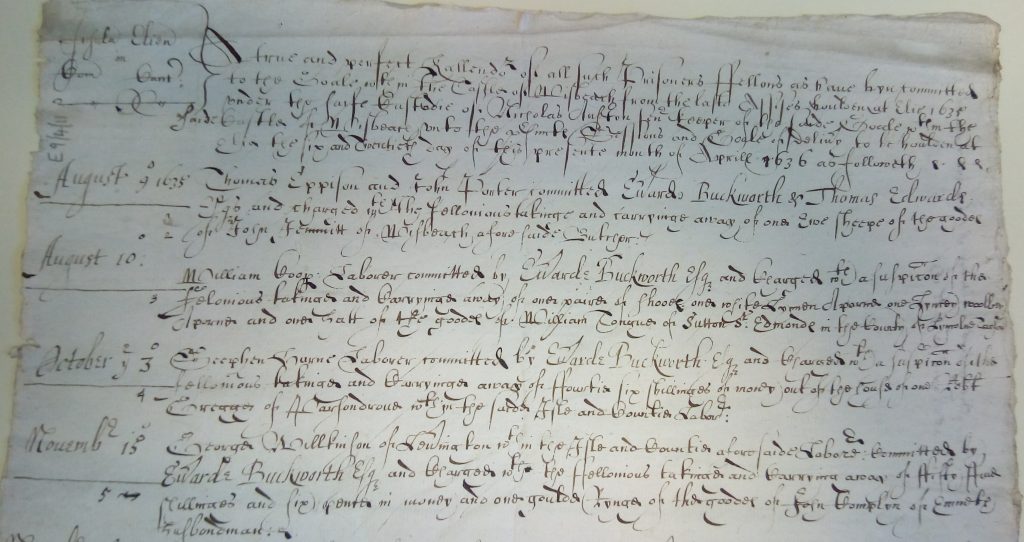
Gaol delivery returns, on the other hand, provide a summary of verdicts and sentences. These tend to give far more detail than the assize rolls of the precise nature of punishment. The punishments in this example from 1631 include fines, burning of a hand, work in the house of correction, whipping and remand in gaol.
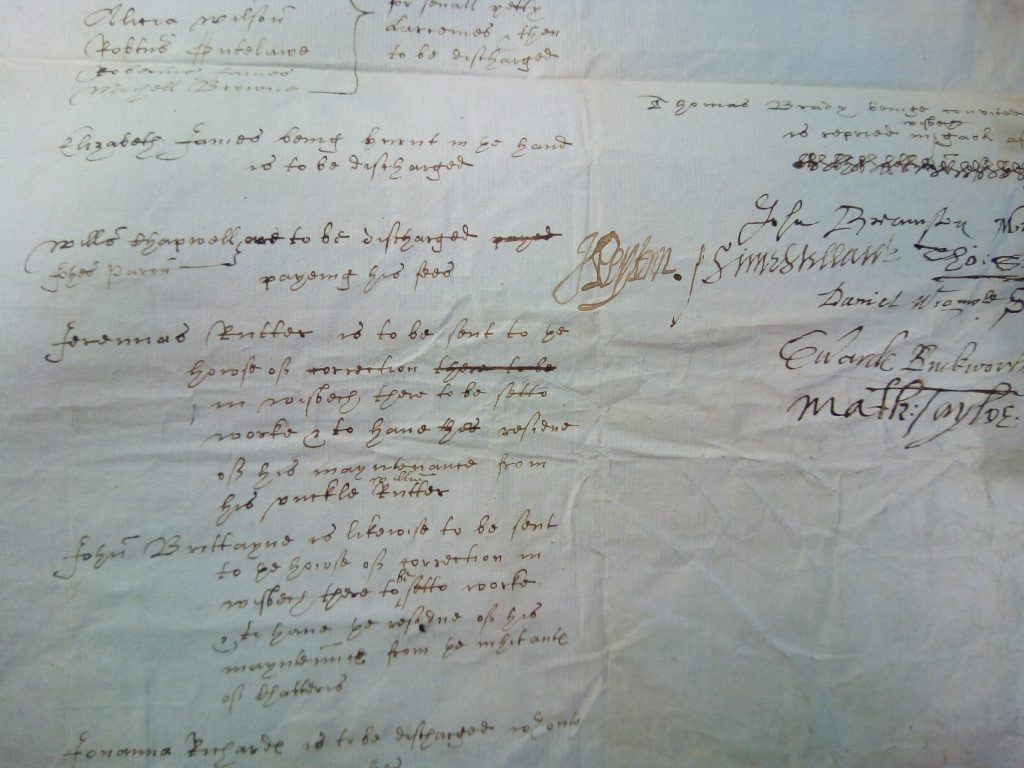
Papers relating to court procedures and processes
In addition to the wealth of information about crimes and criminals, the assize files also comprise records reflecting the process of the assizes. These include letters to the clerk of the assizes in the Isle of Ely proclaiming the assizes, lists of jurors and other court officials, attorneys’ lists of cases, bills of account and correspondence. The files also contain series of coroners’ inquisitions and recognizances or bonds for individuals to appear or to give evidence in court.
The assizes files contain a great wealth of detail relating to crimes and criminals in the Isle of Ely. This detail greatly enhances the formulaic entries recorded in the assize rolls. The overall result is a much fuller understanding of the legal process enacted in the assize courts. As something of a caveat, however, it should be noted that the assize files are in some state of disarray. Some files are simply too fragile to be catalogued in any detail or to be consulted in person. Any material unsuitable for consultation has been marked accordingly in the online catalogue. It is perhaps unsurprising that this series of records has been largely under-exploited by scholars to date. It is hoped that the publication of close to 1000 new catalogue entries on the online catalogue by the end of October 2020 will highlight the great research potential of this body of records.
A project generously funded by the Cambridgeshire & Huntingdonshire Family History Society (CFHS) to catalogue the records of the Isle of Ely assizes is now nearing its conclusion. Earlier updates on the progress of the project can be found here.

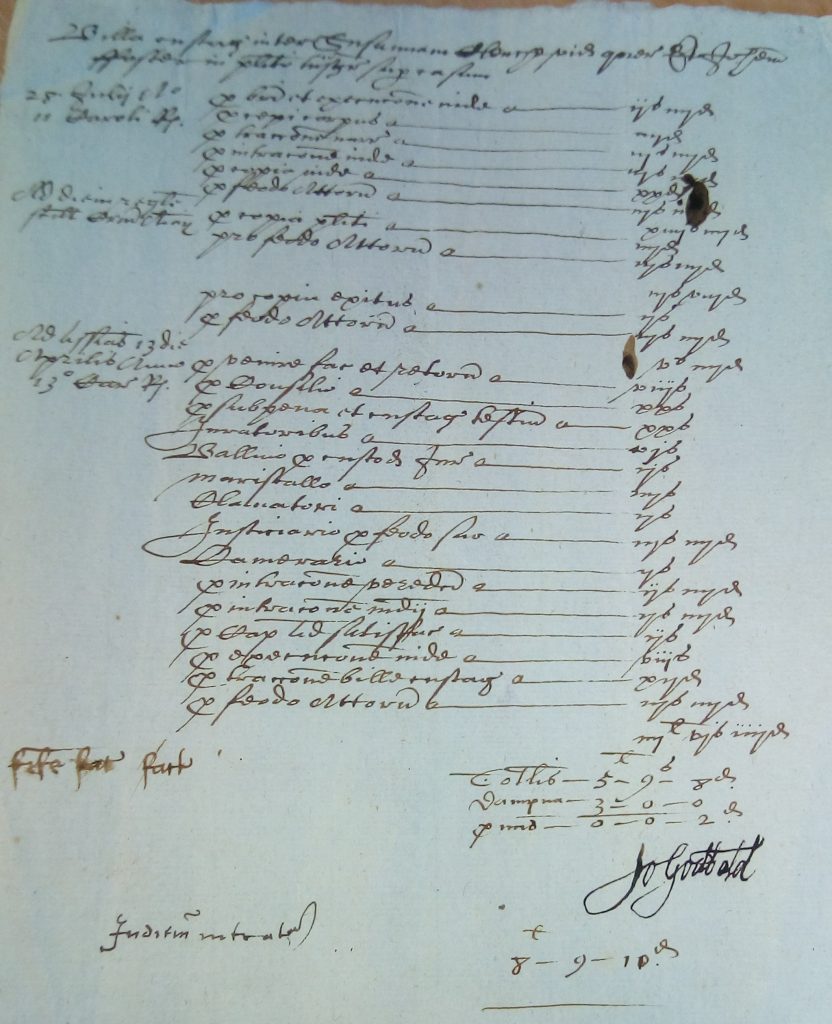
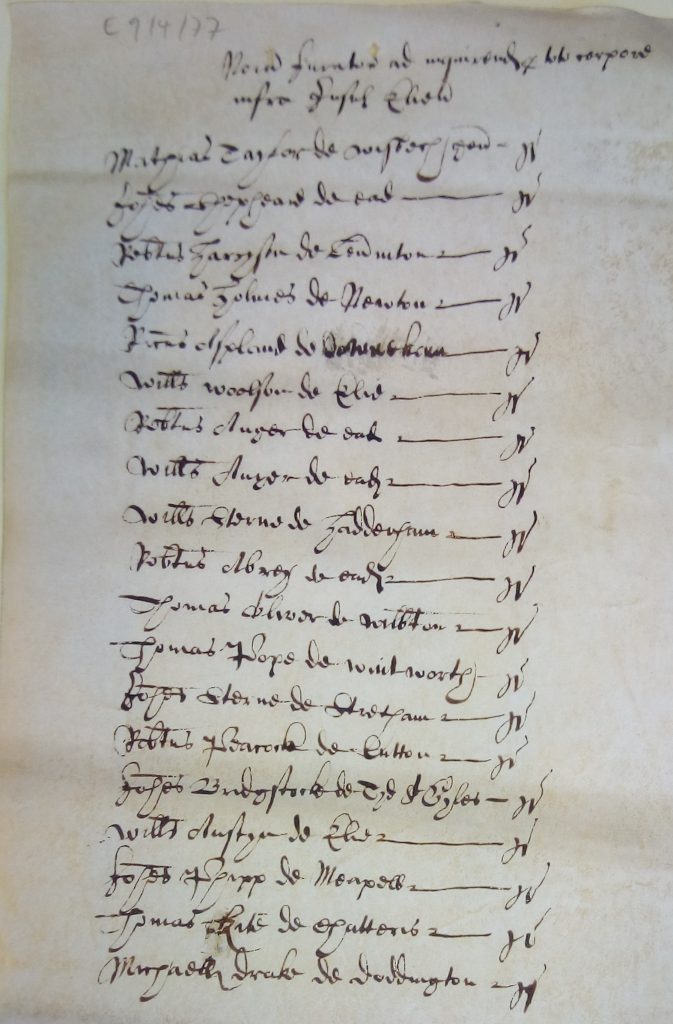
Hello
Is it possible to access Gill Shapland’s transcripts of the depositions re the John and Bridget Bonham case? I am currently researching the case and it would be incredibly helpful to read them. Hope you can help. Thank you.
Thanks for your interest in the project. I have just sent you an email about this.